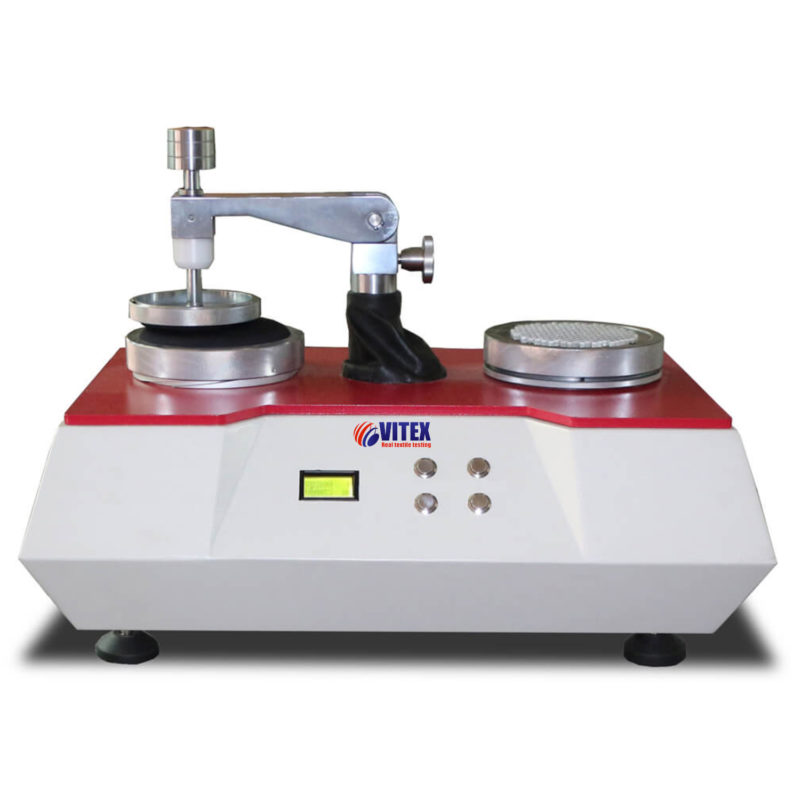Application
Circular Locus Tester, to determine surface deterioration and quality of fabrics (wool, chemical
fiber, mixed, kitted and woven fabrics). Using an active friction system, fabric is rubbed against a nylon brush and abrasive or an abrasive only under controlled conditions. Results of the test are achieved in minutes. The relative motion of the locus specimen grip and the abrasive platform is a circle with a relative speed of 60+/-1 r/min. The grip offers pressure to the specimen which is adjustable with a tolerance of +/-1%. For added control and safety, the machine is equipped with a self-stop switch.
Optional Order
- Standard Abradant gabardine
- Standard Backing Foam
- Standard Brush Set
Standards
GB/T 4802.1
Power
220 /110 V 50/60 Hz
Weight
50 Kg
Dimensions
550 x 260 x 380mm (L x W x H)



